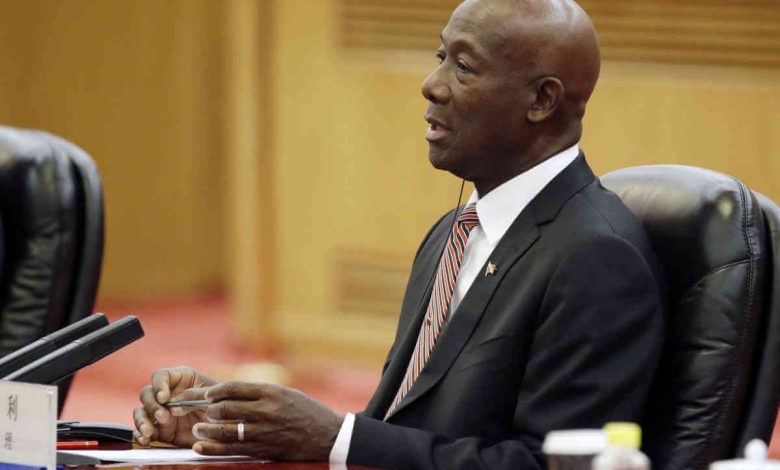US switching on to Caribbean as China moves in

Earlier this year, the US military high command saw fit to warn American lawmakers about the growing influence of China in the Americas, urging the civilian power to do more to combat a structured and well planned foray into this hemisphere.
Watching from their own strategic pinnacle, the generals suggested to lawmakers at a session in March that it was high time to focus on the Caribbean and South American before it is too late as China has made it clear that it is prepared to spend the necessary billions to achieve its economic and diplomatic ambitions in the shortest possible time.
One of those addressing legislators was Gen. Laura Richardson, the head of the Florida-based US Southern Command. She said the Chinese are nearer to achieving its goals than Americans may think. “They are on the 20-yard line of our homeland. We are in a neighborhood, these are our neighbors. We have got to pay attention to them. We’ve got to pay more attention to this region.”
The US has long regarded the Americas as its own diplomatic, economic and military backyard. The Bahamas, for example, is just 50 miles south of Florida and millions of Americans flock to the tourism paradise each year even as the Chinese are investing in a number of projects there. “The People’s Republic of China has the capability and intent to eschew international norms, advance its brand of authoritarianism, and amass power and influence at the expense of these democracies. The PRC has expanded its ability to extract resources, establish ports, manipulate governments through predatory investment practices, and build potential dual-use space facilities, the most space facilities in any combatant command region,” General Richardson had said.
But hope is apparently about to spring eternally for US-Caricom relations largely through a string of recent high-level engagements with the Caribbean, the 15-nation single trading block known as Caricom, has won praises from the grouping. Leaders say that it appears that the region is finally getting the type of attention it needs from the superpower to the north.
“We are at the moment engaged with the US in a way we have not before. That is the first hurdle we had to cross,” said Trinidadian Prime Minister Keith Rowley as he hosted leaders to a summit marking 50 years as an integration movement last week.
The region had in recent decades complained about the neglect of the Caribbean as Washington had placed greater focus on the Middle east and Asia and Afghanistan. In recent months, Vice President Kamla Harris has swung through the region, holding meetings with a slew of Caribbean heads of government in the Bahamas as recently as last month, just weeks before the regional presidents and prime ministers held their own summit in Trinidad. Additionally, Secretary of State Anthony Blinken returned to Washington last Thursday after attending the CARICOM Summit in Trinidad and flying to neighboring Guyana for a five-hour visit to the world’s newest oil producer and exporter and soon to be the country with the highest per capita producer in the world in less than a decade. Attending the summit as well were Minority House Leader Hakeen Jeffries and several American congressmen, a development several leaders noted meant that the US is indeed paying greater attention to the Caribbean.
But an interesting point was made regarding China’s march on the Americas, the Caribbean in particular. Guyana’s President Irfaan Ali made it clear that the country had found it hard to attract American business interest in recent decades but this is changing now even while a number of Chinese companies bid for any and almost every major project the government puts out to tender. The Chinese, he said, displayed raw aggression in bidding for projects and taking advantage of investment opportunities.
“We are partners with many countries, and China is one of our development partners. China has a huge footprint globally, and China – the Chinese companies are very aggressive in the way they do business. They go after opportunity, and that aggression is now being replicated by investors from different parts of the world here in Guyana. I said before publicly that the aggression from the U.S. private sector was not there in terms of going after the opportunities, but as a result of the strong bilateral relationship over the last two years and setting that tone and creating that policy environment and building that trust, we have seen a complete change from the U.S. private sector. And this is as a result of both countries at the policy level saying to the private sector, saying to the investors: There is the opportunity; we are welcoming that opportunity. And that has created a positive shift. More and more investment is coming from the U.S,” Ali said, sharing a press conference with Secretary Blinken.
He also noted that EximBank of the US is providing US$2 billion in financing for projects in Guyana, as he announced that US foreign direct investment in Guyana now stands at $4.2 billion. “This is the highest in history. And if you look at the investment from different countries, this is the highest investment over the last two years,” he said as Blinked looked on.




